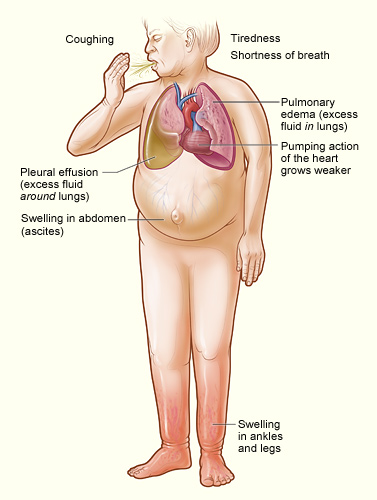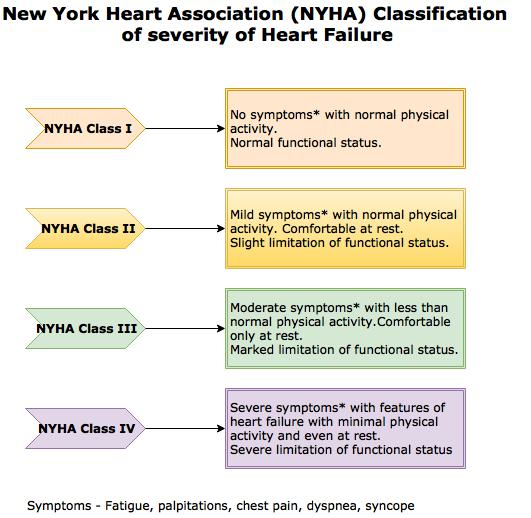[1]
Ural D, Çavuşoğlu Y, Eren M, Karaüzüm K, Temizhan A, Yılmaz MB, Zoghi M, Ramassubu K, Bozkurt B. Diagnosis and management of acute heart failure. Anatolian journal of cardiology. 2015 Nov:15(11):860-89. doi: 10.5152/AnatolJCardiol.2015.6567. Epub
[PubMed PMID: 26574757]
[2]
Harris C, Cao C, Croce B, Munkholm-Larsen S. Heart transplantation. Annals of cardiothoracic surgery. 2018 Jan:7(1):172. doi: 10.21037/acs.2018.01.11. Epub
[PubMed PMID: 29492396]
[3]
Tecson KM, Bass K, Felius J, Hall SA, Jamil AK, Carey SA. Patient "Activation" of Patients Referred for Advanced Heart Failure Therapy. The American journal of cardiology. 2019 Feb 15:123(4):627-631. doi: 10.1016/j.amjcard.2018.11.013. Epub 2018 Nov 24
[PubMed PMID: 30527769]
[4]
Kirklin JK. Terminal heart failure: who should be transplanted and who should have mechanical circulatory support? Current opinion in organ transplantation. 2014 Oct:19(5):486-93. doi: 10.1097/MOT.0000000000000120. Epub
[PubMed PMID: 25186823]
Level 3 (low-level) evidence
[5]
Freeman R, Koerner E, Clark C, Halabicky K. The Path From Heart Failure to Cardiac Transplant. Critical care nursing quarterly. 2016 Jul-Sep:39(3):207-13. doi: 10.1097/CNQ.0000000000000114. Epub
[PubMed PMID: 27254637]
[6]
Prieto D, Correia P, Antunes P, Batista M, Antunes MJ. Results of heart transplantation in the urgent recipient--who should be transplanted? Revista brasileira de cirurgia cardiovascular : orgao oficial da Sociedade Brasileira de Cirurgia Cardiovascular. 2014 Jul-Sep:29(3):379-87
[PubMed PMID: 25372913]
[7]
Cimato TR, Jessup M. Recipient selection in cardiac transplantation: contraindications and risk factors for mortality. The Journal of heart and lung transplantation : the official publication of the International Society for Heart Transplantation. 2002 Nov:21(11):1161-73
[PubMed PMID: 12431490]
[8]
Prieto D, Correia P, Batista M, Antunes Mde J. Heart Transplantation in Patients Older than 65 Years: Worthwhile or Wastage of Organs? The Thoracic and cardiovascular surgeon. 2015 Dec:63(8):684-91. doi: 10.1055/s-0034-1393959. Epub 2014 Nov 21
[PubMed PMID: 25415627]
[9]
Sponga S, Deroma L, Sappa R, Piani D, Lechiancole A, Spagna E, Tursi V, Nalli C, Livi U. Recipient age impact on outcome after cardiac transplantation: should it still be considered in organ allocation? Interactive cardiovascular and thoracic surgery. 2016 Oct:23(4):573-9. doi: 10.1093/icvts/ivw184. Epub 2016 Jun 16
[PubMed PMID: 27316658]
[10]
Kalter-Leibovici O, Freimark D, Freedman LS, Kaufman G, Ziv A, Murad H, Benderly M, Silverman BG, Friedman N, Cukierman-Yaffe T, Asher E, Grupper A, Goldman D, Amitai M, Matetzky S, Shani M, Silber H, Israel Heart Failure Disease Management Study (IHF-DMS) investigators. Disease management in the treatment of patients with chronic heart failure who have universal access to health care: a randomized controlled trial. BMC medicine. 2017 May 1:15(1):90. doi: 10.1186/s12916-017-0855-z. Epub 2017 May 1
[PubMed PMID: 28457231]
Level 1 (high-level) evidence
[11]
Farmer SA, Grady KL, Wang E, McGee EC Jr, Cotts WG, McCarthy PM. Demographic, psychosocial, and behavioral factors associated with survival after heart transplantation. The Annals of thoracic surgery. 2013 Mar:95(3):876-83. doi: 10.1016/j.athoracsur.2012.11.041. Epub 2013 Jan 29
[PubMed PMID: 23374446]
[12]
Bart NK,Macdonald PS, Understanding Tricuspid Regurgitation Post Cardiac Transplantation; Why "Anatomical" and "Functional" Just Won
[PubMed PMID: 37578343]
Level 3 (low-level) evidence

